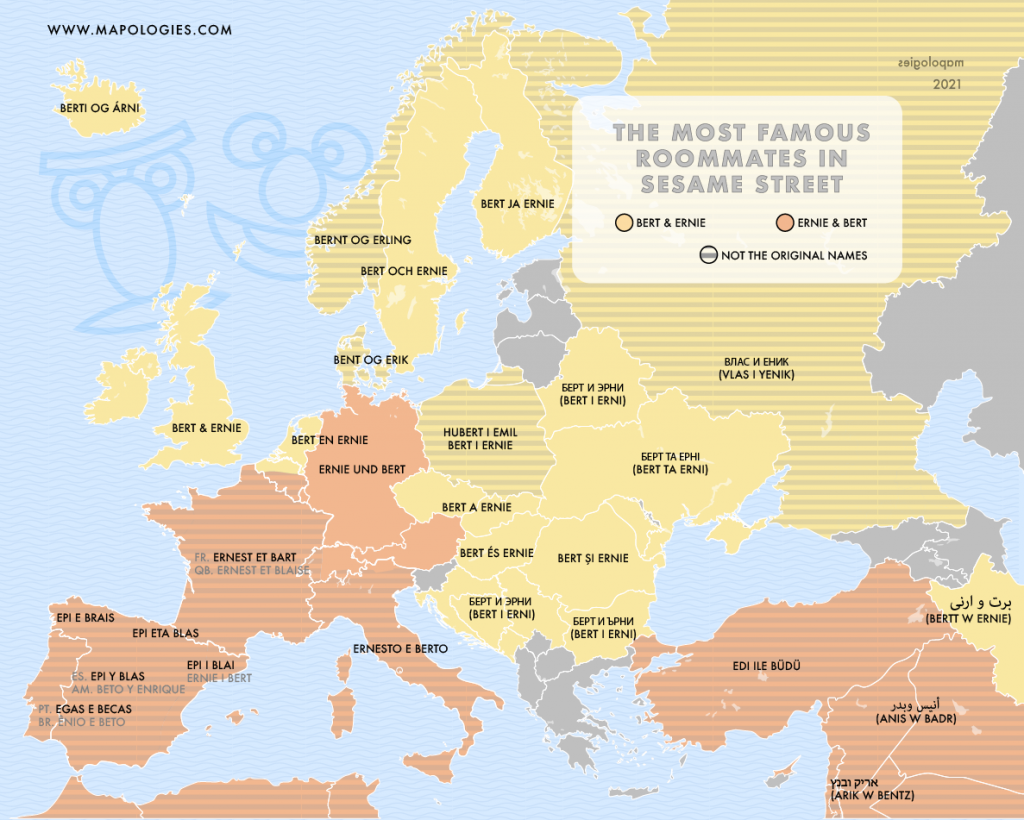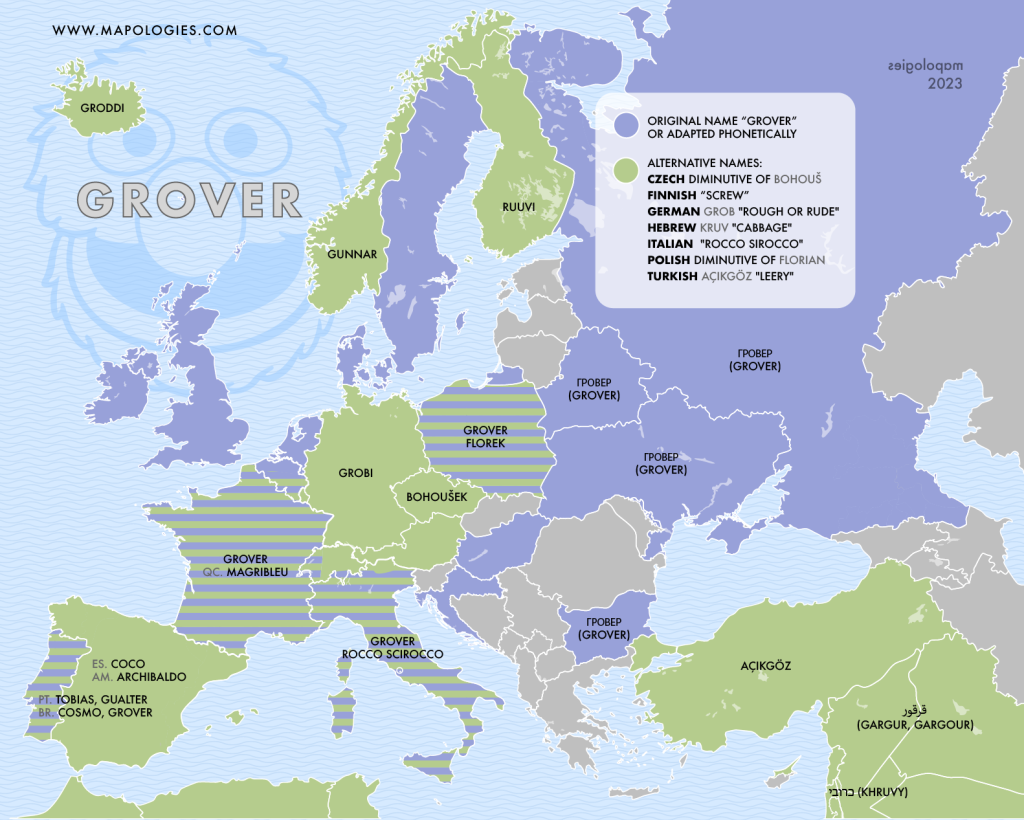Kermit

From the mind of Jim Henson, the creator of the Muppet Show, Sesame Street, and Fragel Rock, emerged a collection of puppets who now belong to the collective global imagination. Undoubtedly the most famous is Kermit, the frog. Like other animals he was subject to evolution, originally was some sort of lizard, and later evolved into a frog. Its eyes and the eleven-point collar are iconic. But also the movements of his arms. On the map, we can see that the name Kermit is not universal. Among Spanish, Portuguese, Hungarian, and Arabic speakers is known with different names: Gustavo in Spain but René in Latin America. There is a story about this one:
Kermit: “OK… Hi everybody in Latin America; I’m Kermit The Frog. Yeah, I know what you’re thinking, you all know me as “René”. B-b-but my real name is “Kermit”: K-E-R-M-I-T. See? So, where did the “René” name come from? Well, it all happened in Mexico… it’s just that the first time I went there, they introduced me as “René”; and I didn’t mean to be rude, so I never corrected that mistake, and since then I’m known over there as “René” and…”
Source
In the Portuguese-speaking countries, he is surprisingly a toad called Cocas in Portugal but in Brasil Kermit, although until recently he was Caco. Béka in Hungary is because Brekeke is the onomatopoeia for a frog (breki). It makes sense. In Arabic-speaking countries, kids call him Kamel, which means perfect. Also reasonable.
Bert & Ernie

“Bert & Ernie” or “Ernie & Bert”? Which is the correct way to refer to these famous puppets? In English, the first option is more common, but this isn’t the case in every language. For instance, in German, the order is reversed. While many languages stick to the original names, translations often vary. In some cases, local names are preferred, likely because they sound better to children. However, this is not a universal trend.
Cookie monster

Even though the Cookie Monster first appeared in 1966, it wasn’t until 2004 that his real name, Sid, was revealed. However, Spanish speakers didn’t wait that long and from the beginning referred to him as “Triki” or “Lucas,” along with “Cookie Monster.”
Some languages translated his name directly, while others opted for entirely new names. Some of these names are clearly linked to desserts, like the Italian “Pasticcino,” or reflect his obsession with eating, as in the Brazilian Portuguese “Come-come.”
Grover

Grover, the blue puppet, is one of the most recognizable characters worldwide, but his name varies significantly from country to country. In Spain, he’s called “Coco,” likely referencing his round coconut-like head. Similarly, in Israel, he’s known as “Kruvi,” a playful twist on the word kruv, meaning “cabbage.” In Czechia, he’s called “Bohoušek,” a diminutive form of various male names that begin with “Bohu.” Interestingly, the German name “Grobi” comes from grob, meaning “rough” or “rude.” On a more positive note, in Turkey, he’s known as “Açıkgöz,” which translates to “open eye” but is understood to mean “clever.”








I love your site — might I have your permission to reprint a map of yours here or there, of course with full credit a link, on my site, http://reason.com/volokh? I particularly like the computer gender map, https://mapologies.files.wordpress.com/2021/01/computer-01-1.png . Thanks,
Eugene Volokh
Professor, UCLA School of Law
volokh@law.ucla.edu
Yes, you are allowed.
Excellent, thanks very much!
Please correct the Italian name: “Kermit la Rana”, not “Kermit il Ranocchio”. Thank you!
I’ve noticed it. In wikipedia is called la Rana but here is called il ranocchio. why is that?https://muppet.fandom.com/wiki/International_Kermit_the_Frog